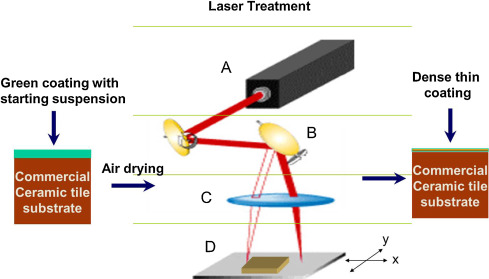V. Rico, C. López-Gascón, J.P. Espinós, R. Lahoz, M. Laguna, A.R. González-Elipe, G.F. de la Fuente
Journal of the European Ceramic Society, 36 (2016) 2831-2836
doi: 10.1016/j.jeurceramsoc.2016.04.016
This work describes an in-situ Nd:YAG laser-assisted coating method to modify industrial glazed ceramic surfaces. The method makes use of a Cu polymer coordination complex, transformed via 1064 nm continuos wave (cw) laser irradiation, into a lustre-type glassy coating covering the ceramic substrate. The obtained coatings, with typical thicknesses ranging between 4 and 14 μm, become integrated onto the ceramic glaze via a sharp interface, as found by SEM observation. Diffuse Reflectance UV-vis spectroscopy shows that the lustre effect arises from surface plasmon resonant effects associated to the formation of nanometric size Cu particles dispersed throughout the glaze coating. This was confirmed by XPS analysis and other techniques showing that the laser decomposition treatment induces the redox transformation of the Cu (II) complexes, present in the original precursor, into reduced Cu (0) nanoparticles.


